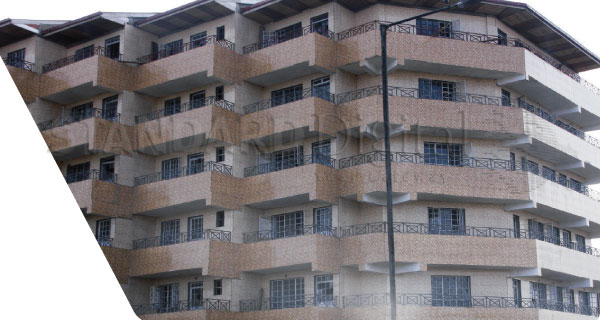 |
|
Most financiers lend between 85 per cent and 90 per cent of the cost of the property. [PHOTOS: FILE/STANDARD] |
By Francis Ayieko
Shortly after Housing Finance launched its new home loan product, stamp duty and legal fees, Joe Mungai, remarked: “This is a great idea whose time has come.”
The Housing Finance product that will see first-time buyers get onto the home ownership ladder without necessarily having to go through the rigours of raising a deposit.
And Mungai, a private developer, has over the years, seen the dreams of scores of Kenyans aspiring to own homes crush simply because they could not raise the money required for upfront payments that comprise at least ten per cent deposit and professional fees that amount up to ten per cent of the property value, for those going the mortgage way.
“This has been a major stumbling block,” he said. “Most people don’t have savings, so they are forced to take a loan to raise the down payment and other upfront charges. They end up struggling with two loans after taking the mortgage.” Mungai, the CEO of Tamarind Investments Ltd, a Nairobi-based real estate development firm focusing on the middle-income segment, said they get many inquiries from people who can service a mortgage, but find it hard to raise the down payment. Most of these, he said, are young people.
scenario
“Many young couples come to us, especially during homes expos, express interest in our properties, then when we tell them the terms, which include raising a deposit, they back off because they can’t afford,” he said.
With most of their properties going for between Sh4 million and Sh7 million, a buyer would be required to raise a deposit of between Sh400,000 and Sh700,000, not to mention paying a four per cent stamp duty, legal fees, valuation fees and insurance premium.
“It is very difficult for them — the middle-class,” he noted.
To be known as Ezesha (its tagline is ‘enabling our aspirations’), the new product will see the form finance up to 105 per cent of the property value. This will cover 100 per cent of the property value (100 per cent mortgage), stamp duty (four per cent) and legal fees (one per cent).
Currently, most financiers lend between 85 per cent and 90 per cent of the property value and leave the borrower to look for the remaining 15 per cent or ten per cent. They also have to raise additional eight per cent to ten per cent to cater for stamp duty and professional fees.
“Many people desire to own a home, but are unable to raise the deposit. Our desire is to make home ownership easier and affordable,” Frank Ireri, Housing Finance Managing Director, said during the launch of the new product on Tuesday last week.
He added: “It takes long years to save for a deposit, yet property prices keep rising.”
The mortgage will be charged a fixed interest rate of 15.9 per cent on reducing balance, HF said, and will be limited to a maximum of Sh15 million or for customers with monthly income of up to Sh350,000.
loan-to-value financing
Stay informed. Subscribe to our newsletter
Housing Finance may have been the first lender to give more than 100 per cent financing, but it is not the first one to give a full loan-to-value or 100 per cent mortgage financing.
In 2011, CfC Stanbic Bank became the first lender to give 100 per cent mortgages in the country. According to CfC Stanbic, the full loan-to-value financing was aimed at making it easier for first-time home buyers to purchase homes since they would not be required to raise the ten or 15 per cent deposit usually required before one is given a home loan.
CfC Stanbic’s Head of Mortgages, Austin Waga, says the uptake of the loan-to-value deal, which targets those buying property worth between Sh3 million and Sh10 million, was “going on well”. The product, he says, had helped increase mortgage uptake in the “lower end of the market”.
“The biggest challenge for customers is raising the deposit. Developers only want those who can raise a down payment. This requirement alienated the portion of aspiring home owners who could not raise the deposit,” he adds.
Experts agree that providing loan-to-value financing will increase the bracket of those who can qualify for mortgage, as many people who could not get a home loan because they could not raise the deposit, are now eligible.
They also agree that to benefit most is the middle-income segment of the market that, for a long time, had been put off by the high deposit required and the mandatory transaction fees.
However, they are divided as to whether lenders offering such deals are over-exposing themselves. Have Kenyan mortgage takers become less risky? What policy reforms in the country have led to this level of confidence on the part of lenders?
According to Dr Wilberforce Oundo, a director at Roack Consult Ltd, a real estate consulting firm based in Nairobi, the move to offer at least 100 per cent mortgage financing was long overdue.
He argues that it no longer makes sense for mortgage firms to continue asking for a deposit at a time when risk levels among borrowers had drastically gone down.
Unlike the period between 2001 and 2004 when most of the valuation instructions they received were for auction purposes, he says, most valuations now are for new cases — new borrowing.
changing industry
“I am in the industry and we do valuations. Rarely do we get valuations for auction purposes. The default rate is minimal,” he said in an earlier interview. He noted that, on average, for every 100 valuations, there were only one or two auction cases, or none at times.
Lending-related risks, he said, are a function of the expansion and growth of the middle-income group, especially changes in their salaries and employment terms.
“All these parameters have been positive in the country for the past three to four years. It, therefore, beats logic for banks and mortgage firms to continue evaluating risk so conservatively,” he said, emphasising that insistence on mortgage deposits by banks was killing the housing sector’s growth as more and more people were finding it difficult to raise the requisite amounts.
When CfC Stanbic launched their loan-to-value mortgage in 2011, Dr Oundo said: “I am happy this has finally happened. I have always believed that there is no good reason why banks should not give full mortgage.”
However, some are warning that “easy mortgage” — where no deposit is required — may in the long run prove too risky for banks. “I think such banks are over-exposing themselves to risk. It is all about unhealthy competition that may eventually lead to a housing crisis like the one witnessed in the United States in 2008,” Kaberere Ndung’u, a Nairobi-based real estate consultant, says.
Banks, he notes, do not give 100 per cent mortgages because the deposit helps them to “cover themselves” (they don’t have to lend too much) in case of default.
“People also tend to appreciate a service more when there is something (deposit) to show commitment on their part,” he adds.
So, isn’t HF risking too much by offering 105 per cent financing? Tim Gitonga, Director of Business Operations at Housing Finance, does not think so.
“First, as a borrower, you must demonstrate ability to pay requisite instalments on a monthly basis and within the defined risk criteria. In other words, you must have sufficient cash flow to meet your obligations. Secondly, the portion above the current market value is insured for default, so if for whatever reason a client is unable to pay, our underwriters will refund that particular portion, that is, 15 per cent above our property discounting value of 90 per cent,” he tells Home and Away.
Asked to rate the risk profile of mortgage takers currently, he says: “We have not seen any incidence of undue default to worry us so far, or deteriorating risk profile for our target market.
As you appreciate, home ownership is at the heart of every Kenyan and no one wants to lose their shelter. We acknowledge that the cost of living is on the rise, but our clients’ commitment to their home ownership repayment programme is on course.”
In practice, he says, over-lending arises when lenders cut interest rates to drive volumes and without deeply investigating applicants’ ability to service the debt. This, he adds, is the kind of “irresponsible lending” which caused havoc among a number of US banks in 2008.
“As you may be aware, the quality of HF asset book has sustained improvement since 2008 while growing in value. This is a testimony of strict credit evaluation criteria coupled with elaborate portfolio monitoring,” says Gitonga.
increasing loan burden
But CfC Stanbic’s Austin Waga, admits that despite lowering home ownership barrier for first-time owners, 100 per cent or 100 per cent plus mortgage financing increases home loan burden for buyers.
“It only quickens the process (first-time entry), but it is a heavy cost. Monthly repayments will be higher than if there had been a deposit,” says Waga.
For instance, buying a Sh6 million house through a 15.9 per cent mortgage interest from HF would require a Sh75,128 monthly instalments for 20 years if you had put a ten per cent deposit. However, if you had gone for the new 105 per cent financing, you would pay a monthly instalments of Sh87,176 under the same terms.
Waga, however, says the presence of credit reference bureau (CRB) had reduced risks. “Default rates have gone down; customers are keen to make sure they service their loans. Because of CRB, it is difficult to transfer risk from one bank to another. Such environment now allows banks to take a little more risk,” he says, noting that banks are keen on taking advantage of the current high housing demand to increase mortgage uptake in the country.
According to the Central Bank of Kenya, the country had 19,177 mortgage accounts by December last year, up from 16,029 in December 2011. The value of mortgage outstanding loans increased from Sh90.4 billion in December 2011 to Sh122.2 billion in December last year.
The CBK says that high interest rates in the first half of last year saw non-performing loans (default cases) increase from Sh3.6 billion in December 2011 to Sh6.9 billion in December last year.
 The Standard Group Plc is a
multi-media organization with investments in media platforms spanning newspaper
print operations, television, radio broadcasting, digital and online services. The
Standard Group is recognized as a leading multi-media house in Kenya with a key
influence in matters of national and international interest.
The Standard Group Plc is a
multi-media organization with investments in media platforms spanning newspaper
print operations, television, radio broadcasting, digital and online services. The
Standard Group is recognized as a leading multi-media house in Kenya with a key
influence in matters of national and international interest.
 The Standard Group Plc is a
multi-media organization with investments in media platforms spanning newspaper
print operations, television, radio broadcasting, digital and online services. The
Standard Group is recognized as a leading multi-media house in Kenya with a key
influence in matters of national and international interest.
The Standard Group Plc is a
multi-media organization with investments in media platforms spanning newspaper
print operations, television, radio broadcasting, digital and online services. The
Standard Group is recognized as a leading multi-media house in Kenya with a key
influence in matters of national and international interest.








